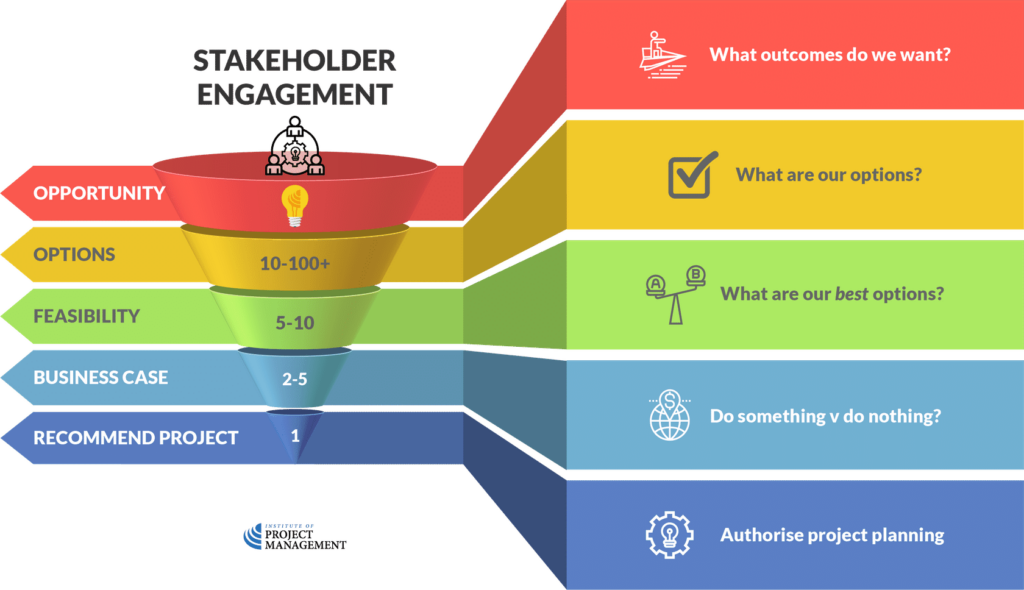From lots of good ideas to one great project
Now we know how to optimally engage project stakeholders, in this Unit, we put it into practice through the project initiation process.

Opportunity definition
Having a good idea is the first step on the path to project success; however, this is not (by itself) enough to get us started.
Before progressing with the idea, we should be able to articulate its benefits (outcomes) and show their linkage to the strategic objectives of the organization or entity we are asking to pay for it as a project.
We might also like to highlight some broad delivery constraints: how long it might take to realize, what it might cost, and what is intentionally out-of-scope.
Theoretically, at least, we should be open to opportunities from anyone in our community of stakeholders.
Options identification
Our good idea is probably not the only way to achieve the outcomes defined by our opportunity; in fact, there may be 10, 20, 100, or more different ways (projects) to achieve the same or closely related benefits.
By researching and brainstorming across our relevant stakeholder community, we should be able to arrive at a range of project solutions that traverse the sublime to the ridiculous.
Feasibility analysis
Thinking critically about our broad range of options, we should be able to reduce them to a handful (no more than 10) that really stand out.
These options can now be subject to a more detailed feasibility analysis by a more expert and interested group of stakeholders.
Ideally, we would like to arrive at no more than 3-4 options that we will subject to the more labor and cost-intensive process of business case development.
The business case
The business case is currently the most under-valued tool in the project manager’s arsenal.
It not only compares the remaining high-potential options against each other across a range of predefined criteria; it challenges the sponsoring organization to consider the relative costs and benefits of doing nothing at all.
A good business case lays bare the decision logic for preferring one project option above all others, stipulates what project success should ultimately look like, and makes the final argument for investment.
As the specific, documented link between project outputs, their intended outcomes, and the strategic objectives of the organization, it will also guide future planning and delivery decisions around change.
Recommendation
In either short or long form, the business case ultimately recommends a course of action for the organization or individual it is addressed to.
At their discretion, that organization or individual can accept (or reject) the option proposed by the business case and authorize the commencement of planning this activity as a project.
This process is called chartering the project and can be fast-tracked by the preparation of a simple project charter where it is felt that the development of a full business case is neither necessary nor appropriate.




